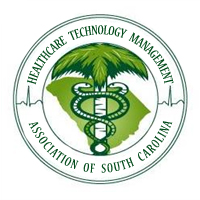-
-
-
-
-
-
-
-
-
-
-
-
-
-
-
FDA Info
-
-
Healthcare Technology Management Association of SCFormerly - South Carolina Biomedical Association |
|
A letter from BiomedTalk from one of the authors of the FDA Problem Codes. Download a copy of the FDA Codes in Excel and Word format. FDA Device Problem Code Hierarchy.docx FDA Medical Device Problem Code Heirarchy (2).xlsx
Patrick Lynch, President, HTMA-SC
Hello Group,
As one of the authors of the recent Journal of Clinical Engineering article on FDA's Device Problem Codes, and a hospital biomedical engineering for most of my career before joining FDA, I wanted to make a couple of comments:
First, with regard to the Event Problem Codes. Please recognize that the word "Codes" is used, in a completely different sense than the word is used as in the Life Safety CODE, or National Electrical CODE. I would hope that those who read our article will understand that these are simply a hierarchy of numeric codes, representing various problems, malfunctions or failures which may occur with medical devices, and in some cases, the observed causality or mode of failure. There is a matching set of "Component Codes", which can be paired with the Device Problem Codes, i.e. the numeric Device Problem Code for "CIRCUIT FAILURE", might be paired with the numeric Component Code for "POWER SUPPLY".
These numeric codes are only "new" in the sense that we have recently endeavored to improve a set of numeric codes which was developed long ago for reporters to use when filling out a MedWatch form.
I won't recap the whole Journal of Clinical Engineering article here, because it is lengthy, but we (the authors) are simply hoping that a diverse group of users (hospital clinical engineers, BMETs, CMMS vendors,
etc) will find these codes for categorizing device failures to be useful, rather than each hospital or CMMS software vendor creating their own home- grown set of problem categories. If a common set of such codes could achieve widespread adoption, then hospitals could more easily compare their device experience data with others (using DATA rather than
anecdotes) and also be able to compare their own experience with the data they can see in FDA's public MAUDE database. Our article was strictly aimed at informing the Biomedical Community of the possible uses for these problem codes which are publically available for anyone's use, in a variety of formats, and which have been internationally harmonized. I would encourage folks to read the article for some specific examples of how they may be useful to you.
Finally, in regard to occurrence reporting - I will just add that biomedical engineers and technicians at hospitals who participate in FDA's MedSun reporting program will often send us reports in which there has been NO death or serious injury (i.e. which do not necessarily meet the criteria for a "mandatory" report). Often, a biomedical engineer at a hospital participating in MedSun will want to make FDA aware of a "potential for harm" issue, "near miss", or safety concern about a device. In no way would we expect or encourage clinical engineers to report every routine repair to FDA - however we value the technical insight which clinical/biomedical engineers bring to the world of patient safety. For this reason, in the MedSun program, we actively encourage participating biomedical engineering professionals to report device safety issues which concern them, regardless of whether there has been an injury. We hope to prevent a future adverse event by receiving such input.
While I've mentioned this in connection with FDA's MedSun program, there is nothing to prevent ANY device user or biomedical professional from filing a similar report via the Voluntary MedWatch reporting channel. Of course, it is always wise to observe the hospital's own reporting practices, keeping Risk Management and Legal in the loop. In MedSun we actually find that Risk Managers WISH that rank and file patient care professionals would more often make them aware of safety concerns BEFORE there is a death or injury, so voluntary reporting of "potential for harm"
issues is very congruent with a patient safety culture.
Sorry for the long comments. Feel free to contact me off list if I can be of help.
Chuck McCullough
lakefan@gmail.com

